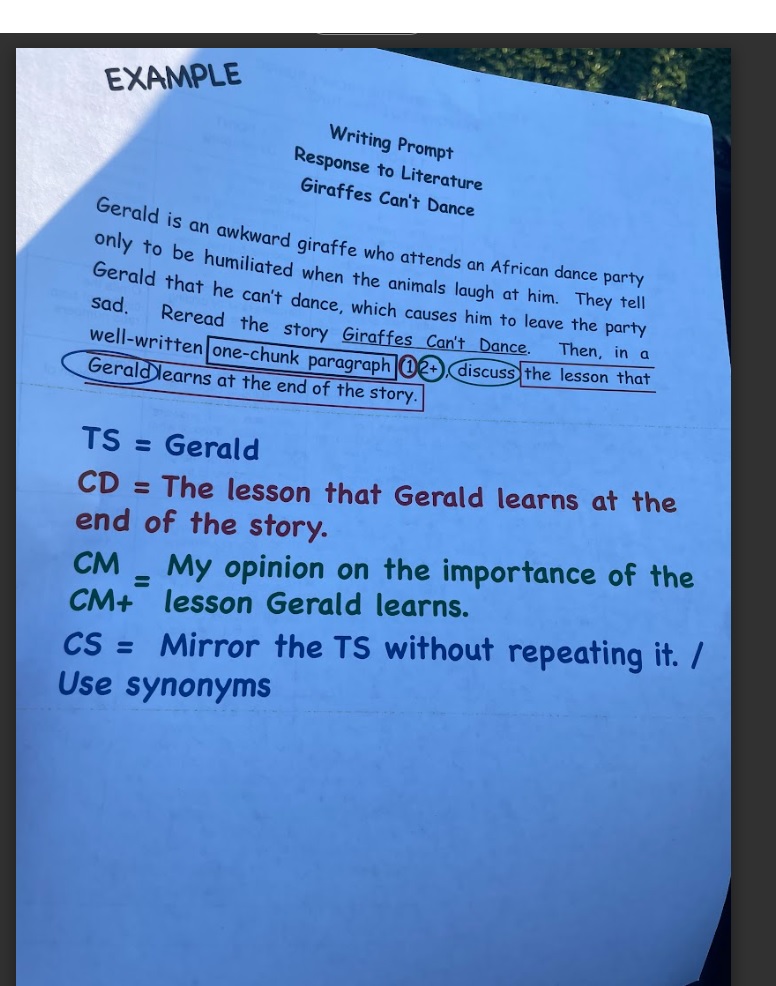The Thesis Statement: A Promise Between a Writer and Her Reader
Question:
My school uses the Jane Schaffer Writing Program for 7th-8th grades both in history and in English classes. We teach about thesis statements in 7th grade, and other teachers on campus begin teaching them in 6th grade and even 5th grade. With your expertise, what age/grade on average is the developmentally appropriate age/grade to first introduce thesis statements? – Mindy R.
Thank you for sharing any wisdom/expertise with us!
Hi, Mindy,
I have worked with elementary teachers for many years, and I find that third grade is the year that teachers require students to write multi-paragraph essays, which require an introduction and, therefore, a thesis statement (sometimes known as a “controlling idea” in the elementary setting). I instruct third and fourth grade teachers to write a one-sentence introduction that is the thesis statement. When students come to fifth grade, we create an introduction with two sentences: a thematic sentence that provides a broad idea related to the topic and then the thesis statement.
Middle school and high school students learn my ten percent rule: an introduction should be ten percent of an essay. In other words, if a teacher assigns a 2,500 word essay, students should write about a 250-word introduction. The same advice goes for the conclusion.
Introduction10%Body80%Conclusion10%
I start by teaching the framed thesis. A framed thesis names the topic of each paragraph. For example, if my essay is about what I like most about April, then I would name what I like most in my thesis statement.
The month of April is special because it is the time when flowers bloom and the weather warms.
My first body paragraph would be about the colors that come from budding flora. My second body paragraph would be about the weather allowing me to wear lighter clothing. The framed thesis is a good way to start because it helps students organize their essays and begins instruction about structure and logic.
In upper level grades, or after students have mastered the framed thesis, I introduce the open thesis. An open thesis is more thematic. It does not identify the topics but rather guides the essence of the essay.
The month of April makes me feel young again.
I will still discuss the colorful blooms and the warm breeze, but I don’t name them in the thesis. The open thesis leaves a little more to the reader’s imagination.
The more exposure to the thesis statement, the better. Each academic year, literary and nonliterary texts become more sophisticated as do writing prompts. Naturally, then, the thesis statements become more sophisticated. If you have a multi-pronged prompt, you will have a multi-pronged thesis.
Many high school English language arts and social studies teachers like debatable thesis statements. That thesis statement lends itself to the art of teaching argumentation.
As the students get taller in their heads, the thesis becomes more complex. I had a wonderful mentor, who taught high school seniors, tell me years ago that a thesis is a compound-complex thought and, therefore, it should be a compound complex sentence.
The thesis statement is a promise, an agreement, and some would say a contract between a writer and her reader. Every word, every phrase, every sentence, and every paragraph in an essay should strive to support and prove the thesis. The thesis statement is that important!
Keep reading and writing!
Warm regards,
Dr. Louis





